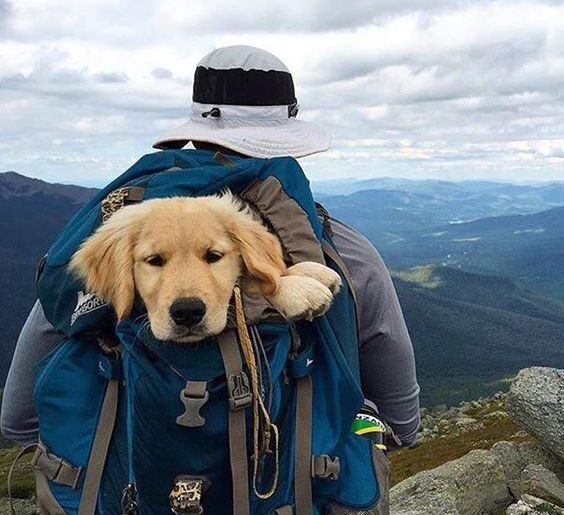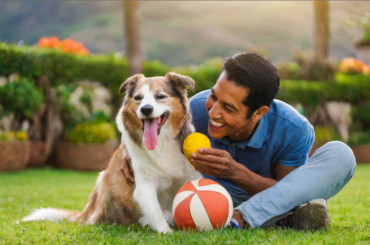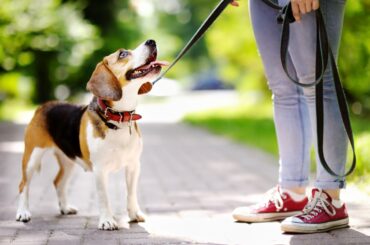Traveling with a dog requires careful planning and consideration to ensure the safety, comfort, and well-being of your furry friend. Whether you’re taking a short road trip or planning a longer journey, here are some tips for the best way to travel with a dog:
-
Pre-Trip Veterinary Check-Up:
- A pre-trip veterinary check-up is crucial to ensure your dog is in optimal health for travel. Discuss your travel plans with the veterinarian, addressing any specific health concerns or conditions your dog may have. Ensure vaccinations are up-to-date, and obtain a copy of your dog’s medical records for reference during the trip. If your journey involves crossing state or international borders, inquire about any required documentation or health certificates.
-
Identification and Microchip:
- Accurate identification is essential in case your dog gets lost during the trip. In addition to a visible ID tag, consider having your dog microchipped. A microchip is a tiny device implanted under your dog’s skin that provides a unique identification number. Ensure the microchip is registered with your current contact information. This added layer of identification significantly increases the chances of a safe reunion if your dog goes missing.
-
Travel-Friendly Crate or Restraint:
- Choosing the right travel crate or restraint is vital for your dog’s safety. If using a crate, select one that allows your dog to stand, turn around, and lie down comfortably. Familiarize your dog with the crate by placing treats and toys inside, gradually increasing the time they spend in it. For car travel, invest in a quality seat belt harness to secure your dog. Ensure the restraint is appropriately sized and designed for your dog’s breed and weight.

- Choosing the right travel crate or restraint is vital for your dog’s safety. If using a crate, select one that allows your dog to stand, turn around, and lie down comfortably. Familiarize your dog with the crate by placing treats and toys inside, gradually increasing the time they spend in it. For car travel, invest in a quality seat belt harness to secure your dog. Ensure the restraint is appropriately sized and designed for your dog’s breed and weight.
-
Comfort Items:
- Packing familiar items helps create a sense of security for your dog during travel. Bring their favorite bed, toys, and a blanket that carries the scent of home. Familiar scents can provide comfort and reduce anxiety. Additionally, consider introducing a new toy or treat to keep your dog engaged and entertained during the journey.
-
Bring Adequate Supplies:
- Plan ahead to ensure you have sufficient supplies for your dog’s needs. Pack enough of your dog’s regular food to last the entire trip and avoid sudden diet changes that could upset their stomach. Carry treats for positive reinforcement during training or calm behavior. Bring a portable water bowl for hydration, and ensure you have waste disposal bags for cleaning up after your dog during breaks.
-
Regular Breaks:
- Regular breaks are essential to allow your dog to stretch its legs, relieve itself, and get some exercise. Plan rest stops every 2-3 hours during road trips. Find pet-friendly areas where your dog can safely explore, and always keep them on a leash. Use these breaks as an opportunity to bond with your dog, reinforcing positive behavior and providing mental stimulation.
-
Safe Restraint in the Car:
- Securing your dog properly in the car is crucial for their safety and the safety of everyone in the vehicle. Avoid letting your dog roam freely in the car, as sudden stops or turns can lead to injury. Use a dog seat belt harness or a travel crate securely anchored in the vehicle. Ensure proper ventilation, especially if using a crate, to keep your dog comfortable.
-
Temperature Considerations:
- Extreme temperatures can pose serious risks to your dog’s health. Never leave your dog unattended in a hot or cold car. If traveling in warmer weather, use sunshades and provide adequate ventilation. In colder conditions, use blankets or bedding to keep your dog warm. Always check the temperature inside the vehicle before leaving your dog alone, even for a short period.
-
Visit Pet-Friendly Accommodations:
- When planning overnight stays, choose accommodations that welcome pets. Many hotels, motels, and vacation rentals are pet-friendly, but it’s essential to confirm their policies and any associated fees. Book in advance to secure a pet-friendly room, and inquire about nearby parks or walking areas for your dog’s exercise and bathroom needs.
-
Exercise Before Travel:
- Before embarking on the journey, engage your dog in a vigorous exercise session. A tired dog is more likely to rest during the trip, reducing anxiety and restlessness. Take a brisk walk or play a game of fetch to burn off excess energy. This pre-travel exercise routine contributes to a calmer and more relaxed dog during the journey.
-
Carry Medical Records:
- Keeping a copy of your dog’s medical records is a precautionary measure in case of emergencies. Include vaccination certificates, information about any ongoing medical conditions, and contact details for your veterinarian. If your dog requires medication, ensure you have an ample supply for the entire trip, along with any necessary administration instructions.
-
Familiarize with the Travel Crate:
- Introduce your dog to the travel crate well before the trip. Start by placing treats and toys inside to encourage positive associations. Gradually increase the time your dog spends in the crate, making it a comfortable and secure space. If your dog shows signs of anxiety or discomfort, consider using familiar bedding or clothing with your scent to make the crate more inviting.
-
Pack a Doggy First Aid Kit:
- A doggy first aid kit is a valuable companion during travel. Include basic items such as bandages, antiseptic wipes, tweezers, and any prescription medications your dog may need. Familiarize yourself with the contents of the kit and how to use them. Having a well-equipped first aid kit ensures you can address minor injuries or health concerns promptly.
-
Training for Calm Behavior:
- Training your dog for calm behavior during car rides requires patience and positive reinforcement. Start with short trips, gradually increasing the duration as your dog becomes more comfortable. Use treats, praise, and toys to reward calm behavior. Avoid scolding or punishing anxious behavior, as this may exacerbate fear. Consistent positive reinforcement builds trust and a positive association with travel.
-
Consult with a Veterinarian for Long Trips:
- For extended journeys or air travel, consulting with your veterinarian is crucial. Discuss your travel plans, and inquire about any specific considerations for long trips. If your dog is prone to motion sickness or anxiety, ask about potential remedies or medications that can make the journey more comfortable for your furry companion. Follow your veterinarian’s advice to ensure a safe and stress-free travel experience.
Remember that every dog is unique, so adjust your travel plans based on your dog’s individual needs and preferences. By planning ahead and prioritizing your dog’s comfort and safety, you can make the travel experience enjoyable for both you and your canine companion.






